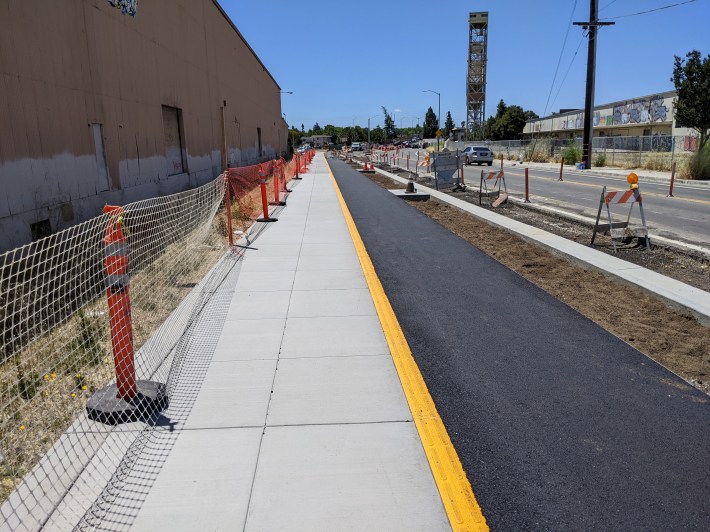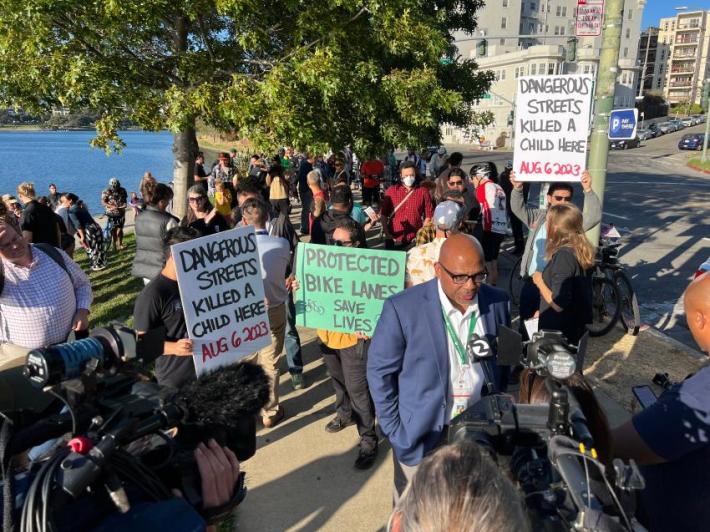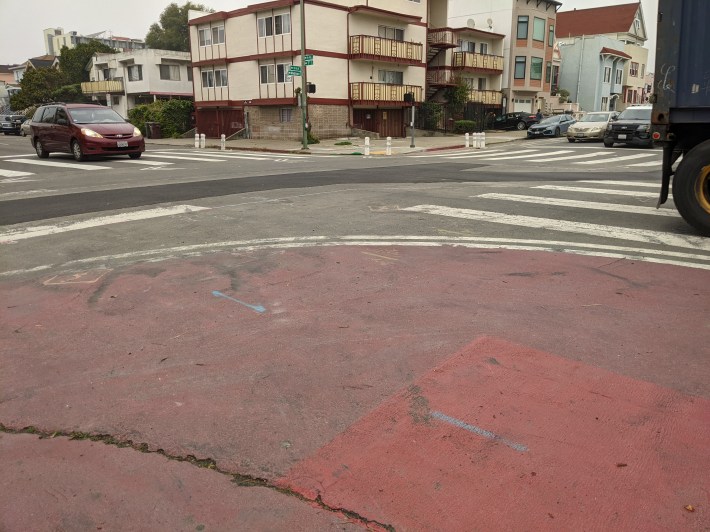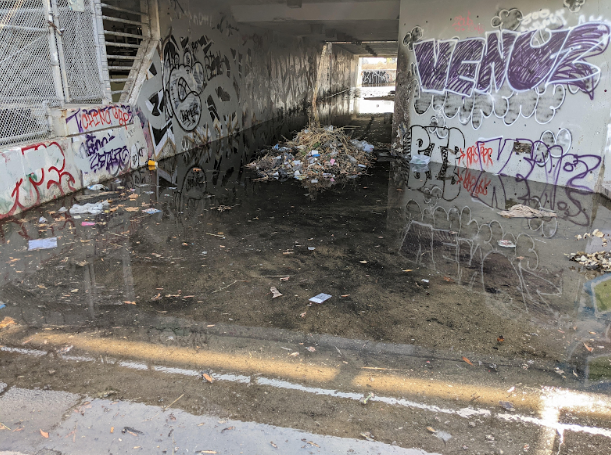Note: GJEL Accident Attorneys regularly sponsors coverage on Streetsblog San Francisco and Streetsblog California. Unless noted in the story, GJEL Accident Attorneys is not consulted for the content or editorial direction of the sponsored content.
It took the death of a four-year-old child in August to move Oakland forward with long-stalled plans to encircle Lake Merritt with a protected bike lane. It also caused Oakland Mayor Sheng Thao to declare last week that her city will no longer wait for almost unspeakable tragedies to spur the construction of safe streets:
We're accelerating plans for a two-way separated bike lane on Lakeshore Avenue, advancing construction by two years in collaboration with the East Bay Municipal Utility District (@EBMUD). This move underscores our unwavering commitment to taking immediate, proactive measures for… https://t.co/Nsy2pKZBMm
— Mayor Sheng Thao 盛桃 (@MayorShengThao) November 28, 2023
Click on the Tweet to read her full statement. But the key takeaway: "It's time to reach a critical juncture where tragedies don’t catalyze improvements."
In other words, Oakland can't wait for a four-year-old child to be killed before it fixes a street. It has to be proactive and do it everywhere all at once to prevent the deaths of little children.
The city has its work cut out for it. Not only has it suffered record fatality rates on its streets, but, as seen in the lead image, even the bike safety infrastructure its already built is sometimes left unusable.
To its credit, Oakland has some impressive safety projects. Streetsblog has given frequent updates on construction on Telegraph and West Street. And when Streetsblog was researching a story about the Lakeshore protected bike lane project, Oakland spokesperson Sean Maher sent this list of other bike lane projects in progress:
- The Lakeside Drive/Lake Merritt Boulevard Complete Streets Paving Project will construct a combination of Class 2 and 4 bike facilities around Lake Merritt from Madison Street/Lakeside Drive intersection to 1st Avenue/International Blvd intersection. A two-way cycle track will be provided on Lakeside Drive from Madison Street to 17th Street and on Lake Merritt Boulevard from 14th Street/Oak Street/Lakeside Drive to 1st Avenue/East 12th Street. Separated bike lanes will be provided on 1st Avenue between East 12th Street and International Boulevard. Class 2 bike lanes will be provided on Lakeside Drive between 14th Street/Oak Street/Lake Merritt Boulevard to 17th Street. The project is in the final stage of the design process.
- The Lakeside Family Streets Project will construct a two-way cycle track on Grand Avenue between Harrison Street and Bay Place. The project is in the final stage of the design process.
- The Grand Avenue Complete Streets Paving Project will include separated bikeways on Grand Avenue between Bay Place and MacArthur Blvd and on El Embarcadero between Grand Avenue and Lakeshore, connecting to the Lakeshore Separated Bike Lanes project. This project is still in preliminary design and additional engagement opportunities on the project’s design will be forthcoming.
- The Caltrans-led I-580 Bridge Rehabilitation Project is currently proposing to construct separated bike lanes on Grand Avenue between MacArthur Boulevard and Lake Park Avenue/Santa Clara Avenue.
But as welcome as these marquee projects are to advocates, they represent a sliver of the dangerous streets and intersections in Oakland. If they were all finished tomorrow, they'd barely make a dent in the 30-plus deadly crashes Oakland endures every year.

"Back in August the OakDOT bike program staff provided a presentation to the BPAC (meeting info here) on the city's bike plan implementation progress," wrote Bike East Bay's Robert Prinz in an email to Streetsblog about Mayor Thao's Tweet. "While the progress is significant and more substantial than most other East Bay communities, I commented that it was important to track not only what *is* happening but also what *isn't* happening, meaning the 2019 bike plan recommendations that weren't implemented alongside capital projects."

Moreover, as Oakland continues to move forward with its paving plans, it is squandering an opportunity to implement protected bike lanes as it paves and is instead simply repainting old door-zone bike lanes — which studies show don't actually make streets safer.
Then there's the estuary channel path connecting Jack London Square with Lakeshore (the lead image). Even as Oakland is responding to pressure to fix potholes and repair streets, it has allowed one of its only off-street bike paths to fall into such disrepair that it's unusable. It's now a bike facility that shows up on a map, but for all intents and purposes it doesn't exist. When another little child is killed by a motorist while riding on a parallel street because that path is unavailable, will that, to quote the mayor, finally be the "critical juncture?" Streetsblog has reached out to the city but has so far received no commitment to repair and maintain the path.

Still, Prinz sees hope in her statement. "Oakland DOT is now also doing good work monitoring fatal traffic crashes and publishing this info publicly via reports and maps here: https://www.oaklandca.gov/topics/traffic-fatality-tracking. Fatal crashes went up significantly starting in 2020, and have continued to be high each year since then," he wrote to Streetsblog. "Ultimately, when this number goes below pre-pandemic rates, then at or close to zero, is how we will know that enough is being done proactively."





